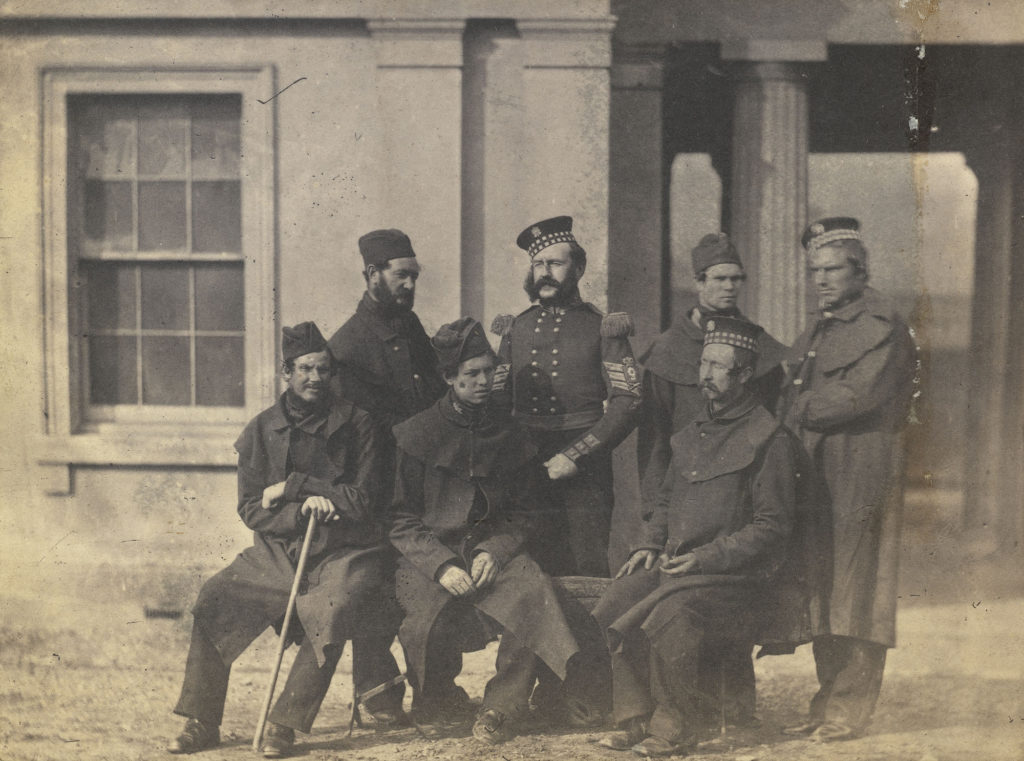For specific history of the Guards Depot(s) please see the links below:
The origins of ‘The Guards Depot’ does in fact date back well before 1877 when the Guards Depot, Caterham opened its gates.
Before this time, the first ‘Guards Depot’ dated back to 1832. In that year, Warley Barracks, Essex – which had been a recruit depot for the Honourable East India Company – opened for the Brigade.
Before Warley Barracks, Guards’ recruits had been accommodated in a ‘recruit house’ at Wellington Barracks, London.
Warley Barracks, however, was a temporary measure. In 1833, recruits from the Coldstream Guards and Scots Fusilier Guards (as the Scots Guards were known then) were transferred to Mitcham Road Barracks in Croydon; the Grenadier Guards followed in 1834.
The Croydon Depot lasted for thirty years, commanded by Subalterns whose tour of duty there lasted fourteen days.

The Grenadier Guards then moved to St John’s Wood Barracks in 1854 and remained there until the Crimean War, 1856.
In 1865, the Depot moved back to Warley Barracks and then finally, in 1877, came the transfer to Caterham.
The new Depot must have seemed too good to be true. It incorporated every advance in the military thinking of the day, including many positive developments in the field of health and hygiene.
Up to this point of the 19th century, the barracks of Britain had been breeding grounds for regular epidemics which took a heavy toll of their occupants, and the barracks used for overseas postings were even worse.
A measure of the living conditions of the British Soldier can be gauged from the fact that, even in peacetime, his life expectancy had been shorter than the average civilian.
The situation in the fleet was similar. Naval personnel suffered the same privation and lack of basic amenities to anything like a satisfactory standard. There too, health standards were poor!
By the middle of the century, the consequences began to cause serious alarm in Government, the services, industry and commerce. Britain was the world’s first major trading nation, and trade followed the flag. The nation’s overseas interest – its possessions and markets depended on protection by the Army and Navy, and recruitment to both was falling to dangerous levels.
In its day, the Guards Depot at Caterham was a major watershed, the first move in a national campaign to reverse the trend, and it had been planned meticulously by leading military and medical experts of the time.
In 1877, the new arrivals at the Guards Depot, Caterham, found standards they had never experienced before.
Instead of the disease-fostering congested barrack rooms they had known, the living and sleeping accommodation was spacious by comparison, with greatly improved ventilation and light. Ceilings were high and allowed space for much larger windows. Naturally, facilities for Drill and Weapon Training were of a high order, but so were those for sport, exercise and relaxation.
For recruits and old soldiers alike, it was a revelation.
(continue reading about the Guards Depot, Caterham or the Guards Depot, Pirbright at the links above).


